
Image source: "Water Margin (1998)"
In 298 BC, the Pingyuan Jun of Zhao State had three thousand guests, and among them, Mao Sui alone could debate with the scholars in the court of Chu, winning opportunities for Zhao State.
More than two thousand years later, on September 1, 2025, a token named WLFI landed on global trading platforms. The Chinese capital network spanning the Pacific is supporting the digital empire of the American presidential family.
Behind this $40 billion project stands a group of modern "guests." There are Chinese billionaires who have invested $75 million, founders of trading platforms seeking presidential pardons, stablecoin experts deeply rooted in the Asian market, and an Eastern force described as "capable of making the Trump family's wealth soar, yet can also bring them back to poverty overnight when they overstep."
As the wealth of American political families intertwines deeply with Eastern capital, and as China influences the global crypto landscape through the Hong Kong market, a new geopolitical game is unfolding.
Binance, the Central Node of the Chinese Network
To understand the influence of Chinese individuals in the WLFI project, one must start with Binance, the world's largest cryptocurrency trading platform. Founded by Chinese entrepreneurs, this trading platform has now become the neural hub of the entire Chinese crypto network.
Binance accounts for about 30% of global cryptocurrency trading volume, with a daily transaction volume exceeding $20 billion. Its penetration in the Asian market exceeds 60%, meaning that most capital flows must pass through its system. This level of control places Binance in a near-monopolistic position within the Chinese network.
Binance's founder, Zhao Changpeng (CZ), was sentenced to four months in prison for violating anti-money laundering regulations. According to insiders, CZ is seeking a presidential pardon through various channels. This rumor is not unfounded. During his first term, Trump had shown leniency towards several financial criminals, including his former campaign manager Paul Manafort.
For CZ, a four-month sentence may not be long, but for a business empire controlling hundreds of billions of dollars in assets, the founder's freedom is crucial to the stability of the entire system.
On March 13, 2025, The Wall Street Journal reported that the Trump family was negotiating to acquire a significant stake in Binance US, but CZ strongly denied it. Subsequently, Bloomberg also published an article stating that they were confident that some of the sources were very reliable, citing four anonymous individuals familiar with the situation, including that both parties were set to launch a stablecoin, which is what we now see as USD1.
Despite strong denials from both sides, the interaction between USD1 and Binance still reflects a close relationship.
At the end of April, WLFI and CZ's official social media accounts released photos of WLFI's three co-founders meeting with CZ in Abu Dhabi, stating that the discussions included how to expand global adoption, set new standards, and elevate cryptocurrency to new heights.
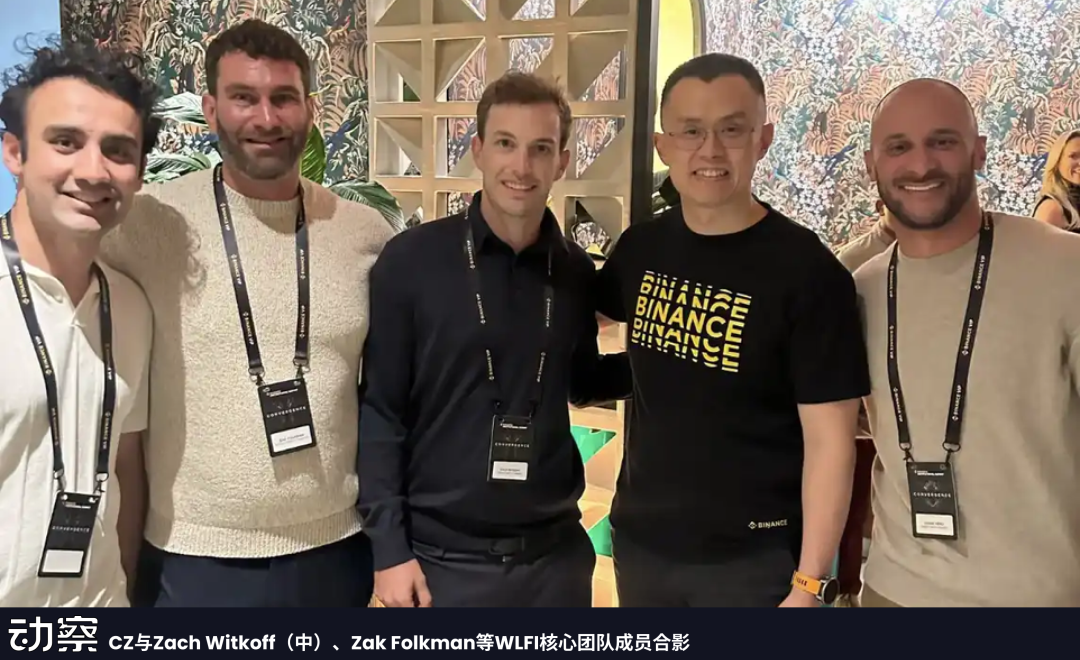
In early May, Eric Trump, Trump's second son, revealed during the Token2049 event that the Abu Dhabi investment company MGX had invested $2 billion in Binance, with the payment made in USD1 stablecoin. Normally, this fund should be quickly converted into dollars, but Binance kept $1.9 billion in its own address, becoming the largest holder of USD1, accounting for 92.8% of the total circulation.
This operation directly pushed the market value of USD1 from $130 million to $2.1 billion. If this portion of funds is excluded, the actual circulation of USD1 is only around $100 million. The inflated data on the surface became a key support for WLFI's $40 billion valuation. Such inflationary practices could constitute market manipulation in traditional financial markets, but have become common tactics in the relatively loosely regulated cryptocurrency field.
In the same month, WLFI officially tweeted to openly support the cultural mascot meme coin $B (BUILDon) for the Binance BNB Chain ecosystem, purchasing about $25,000 worth of $B. The news caused a stir in the market, and the token price skyrocketed, with its market value briefly exceeding $300 million.
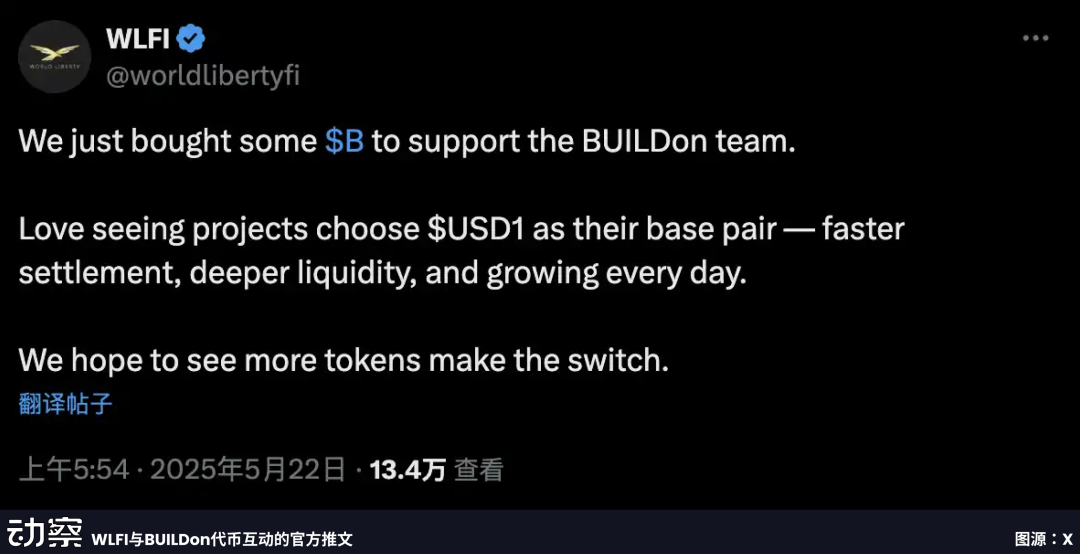
WLFI's public endorsement of $B is not just a small investment. For Binance, meme coins are both amplifiers of community sentiment and natural entry points for traffic. The attention brought by the hype around $B quickly fed back into the narrative of USD1. It was no longer just a newly launched stablecoin but was packaged into a larger story of "ecosystem expansion" and "community co-construction."
In this system, Binance is using familiar methods to tie the promotion of stablecoins to the frenzy of the meme market, first attracting attention with meme coins, then embedding USD1 in the role of "base currency." Hype has become a strategy, and popularity has turned into a tool for market education. The ecological promotion of USD1 has thus gained far more visibility than its actual size in a short time.
Gathering of Chinese Guests
Beyond Binance, a group of technical projects has also gathered, and their collaboration with WLFI has made the connections within the entire ecosystem tighter. These seemingly independent companies are actually weaving a sophisticated network of Chinese capital together.
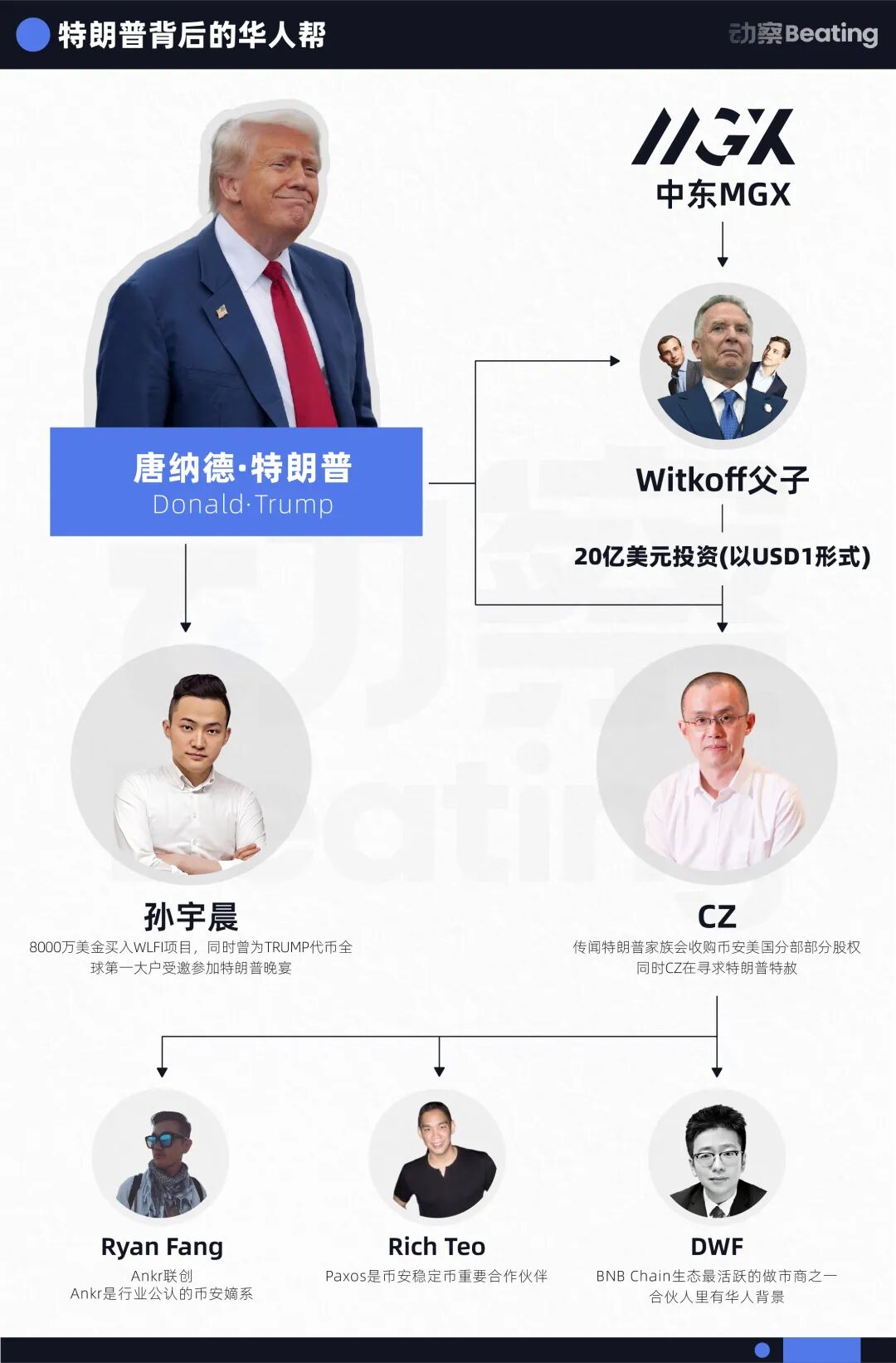
Ryan Fang: The Only Chinese in the Current Team, Binance's Most Trusted Project Operator
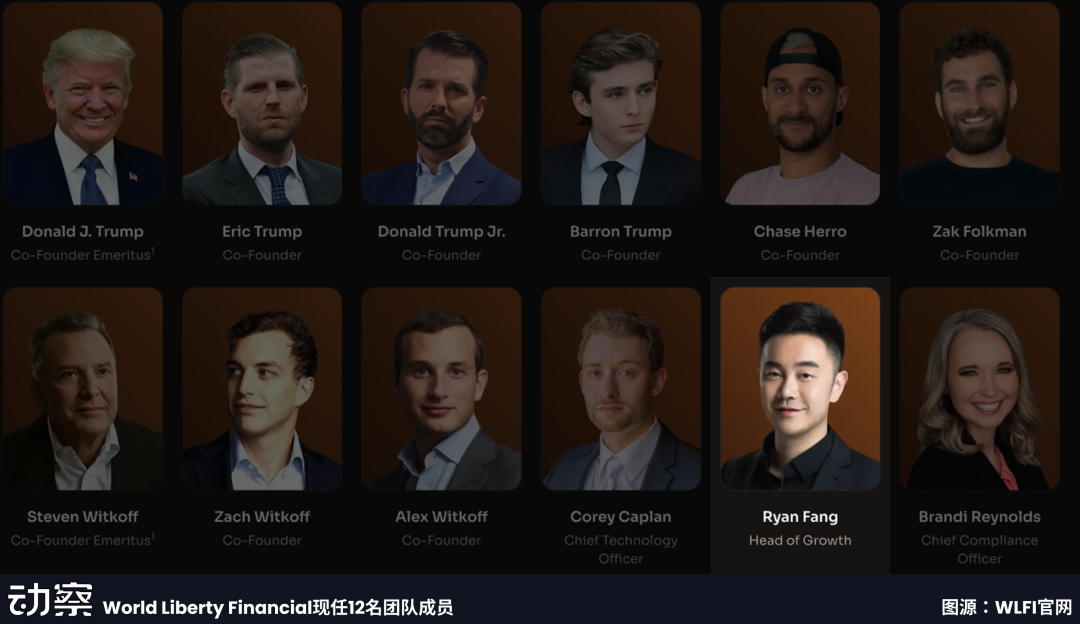
In the Chinese technical network of WLFI, Ryan Fang occupies an important position as the only Chinese in the current team. Ankr is also recognized as Binance's "direct lineage." In addition to BSC nodes and liquidity staking services, well-known projects in the BSC (now BNBChain) ecosystem, such as BounceBit, Auction, and Neura, all originated from the Ankr team.
Ryan is the co-founder and COO of Ankr and has also participated in the creation of PrimeBlock and Tomo. He worked at Morgan Stanley in his early years and later entered the private equity industry, accumulating experience in traditional finance. This background allows him to understand the combination of capital and technology more quickly in the blockchain world.
Ankr, as a leading global blockchain infrastructure service provider, offers RPC nodes and cross-chain tools for multiple projects, including Binance's BSC chain. The circulation of USD1 relies on these nodes to complete transaction confirmations and maintain network stability, and through Ankr's cross-chain services, USD1 can be freely transferred across multiple chains, including Ethereum, BNB Chain, and Polygon.
In WLFI, Ankr has another role. Its Liquid Staking product allows USD1 to be staked and generate returns, transforming this token from a mere payment tool into a financial asset. While users earn returns, they also contribute liquidity to the entire ecosystem.
Ankr has provided services for over 8,000 blockchain projects, and these existing customer relationships form a natural channel for USD1 to expand outward. For stablecoins to enter new application scenarios, they can leverage Ankr's network for distribution.
As a modern "guest," Ryan Fang integrates a newly issued stablecoin into the daily operations of the global crypto market through infrastructure.
Rich Teo: The Foxconn Factory of Stablecoins
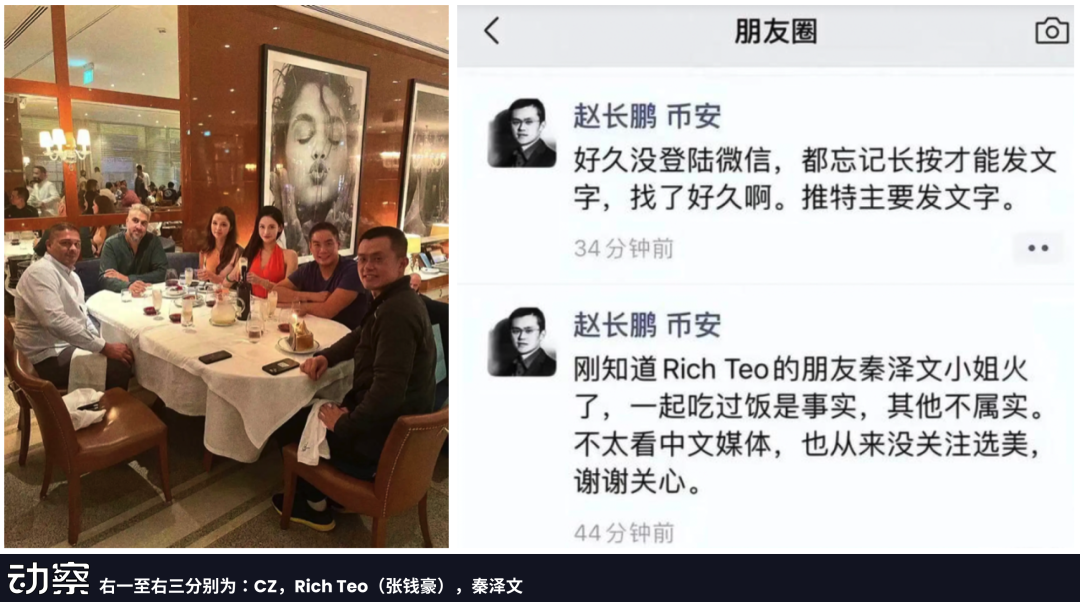
The WLFI project also features Richmond Teo, co-founder of Paxos.
Paxos was once Binance's most important stablecoin partner. Its issued BUSD served as Binance's main stablecoin for a long time, with a market value exceeding $20 billion at one point.
During 2022, Paxos became the world's leading stablecoin issuer and technology provider. Its co-founder, Rich Teo, had a good personal relationship with Binance CEO CZ, and at that time, there were quite a few rumors in the crypto circle, leading CZ to make rare public denials.
By 2023, U.S. regulators required Paxos to stop issuing BUSD, and the company suddenly fell from grace, entering a long period of silence. The industry widely believed that Paxos had lost its competitiveness.
Of course, with the advancement of U.S. stablecoin legislation, Paxos has once again become one of the teams benefiting from regulatory dividends, with stablecoins like PayPal's PYUSD and DBS Bank's USDG being issued by Paxos.
Teo was responsible for the Asian market business at Paxos and is very familiar with the compliance paths for stablecoins under different regulatory systems. The halt of BUSD was a heavy blow for him, but it also forced him to accumulate experience in dealing with regulatory and market contractions. This experience is particularly important for WLFI, as the issuance and circulation of USD1 also face regulatory uncertainties.
Teo's presence signifies not only a personal return but also Paxos's attempt to find an opportunity to re-enter the stablecoin race through WLFI. This relationship makes USD1 more easily accepted in the market and adds a layer of assurance to Binance's trust in WLFI. For the entire Chinese network, Teo's addition means a crucial piece has been filled in terms of compliance and regulation.
DWF Labs: Key Liquidity Provider
In the Chinese network of WLFI, DWF Labs serves as a key liquidity provider.
Headquartered in the UAE, this company has grown into one of the largest high-frequency cryptocurrency trading entities in the world over three years, managing over $2 billion in assets and providing market-making for hundreds of projects, many of which have developed into top projects with market values exceeding $1 billion.
In the BNB Chain ecosystem, DWF Labs holds a prominent position. It maintains a close relationship with Binance, playing a core role in providing liquidity support for on-chain projects and directly participating in ecosystem construction. As a top market maker, DWF Labs collaborates with major global trading platforms, securing listing channels for new projects and providing support in dealing with regulations.
For WLFI, DWF Labs' involvement is not just a fleeting moment. It has invested $25 million, occupying an important share of the Chinese capital contributions, and is expected to become WLFI's official market maker, responsible for maintaining price stability and market liquidity. Once it takes on this role, DWF Labs will be deeply bound to WLFI, which also means it will have a direct connection to the Trump family's digital asset plans.
In addition, its initiated DeFi project Falcon Finance has also received token investment from WLFI and has accepted USD1 as collateral for the protocol right from the start.
Sun Yuchen's "Key Rescue"
In this Chinese network, Sun Yuchen plays a crucial "firefighter" role. In October 2024, when the WLFI project was struggling with poor sales, having raised only $2.7 million and on the verge of failure, Sun Yuchen's investment came like a breath of fresh air, saving this near-defunct project.
The timing of this investment is astonishingly precise. It occurred in the third week after Trump's victory, at a critical moment when the global crypto market was celebrating due to policy expectations. At that time, the price of Bitcoin soared from $70,000 to $100,000, and the total market value of the entire crypto market increased by over $1 trillion.
As the founder of TRON, Sun Yuchen understands the political value of this investment. TRON is the third-largest blockchain network in the world, second only to Ethereum and BNB Chain, with over 200 million users and $100 billion in on-chain assets.
Sun Yuchen has a close relationship with Binance founder Zhao Changpeng (CZ). Sun Yuchen publicly refers to CZ as a "mentor and friend," and their friendship transcends mere business cooperation. When CZ faced legal issues due to violations of anti-money laundering regulations, Sun Yuchen was one of the few industry leaders to publicly express support, drawing significant attention within the industry. This mutual support relationship gives Sun Yuchen's investment decisions considerable influence within the Chinese network.
The Trump family's stake in the WLFI project is approximately $400 million, accounting for about 40% of their total wealth. This highly concentrated investment strategy has led to an unprecedented desire for the project's success.
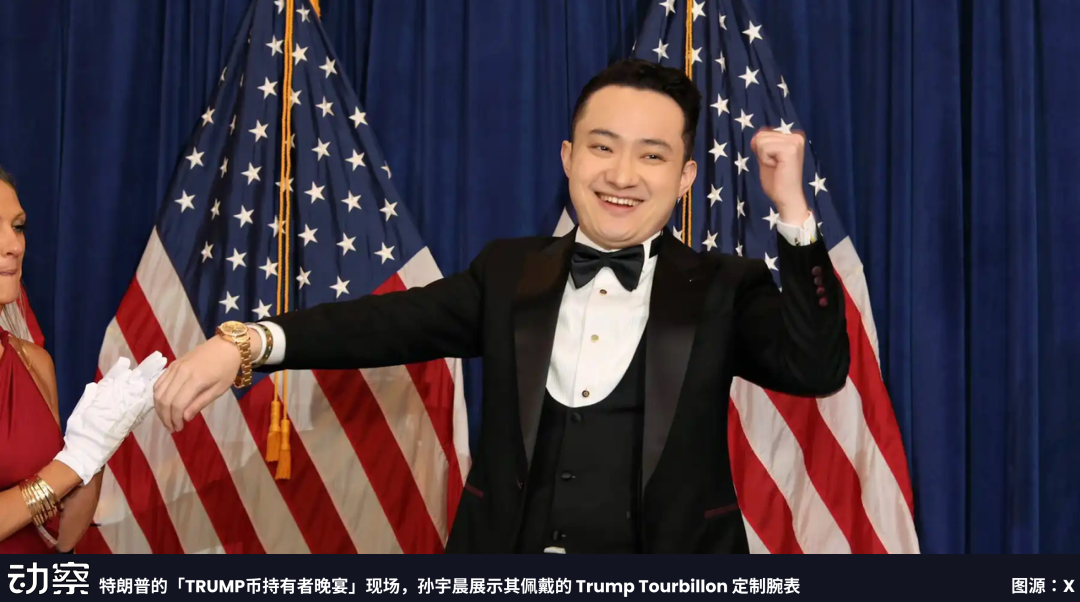
Subsequently, Sun Yuchen obtained an advisory role at WLFI and emphasized the role of financial freedom and USD1 alongside Eric Trump in public appearances. More importantly, he added another $45 million investment, bringing his total investment to $75 million, further binding his interests with WLFI.
Eric Trump's "Pilgrimage" to Hong Kong, the Strategic Chess Game of WLFI
On August 29, 2025, at the Hong Kong Convention and Exhibition Centre.
In the main venue of the BitcoinAsia conference, cryptocurrency investors from across Asia gathered. When Eric Trump took the stage, the audience erupted in enthusiastic applause. The son of the American president thanked Hong Kong for the warm welcome, describing the atmosphere as "like a rock concert."
He explained to the audience that part of the Trump family's entry into the Bitcoin space was due to the "de-banking" by traditional financial institutions, which led them to find allies in the cryptocurrency community.
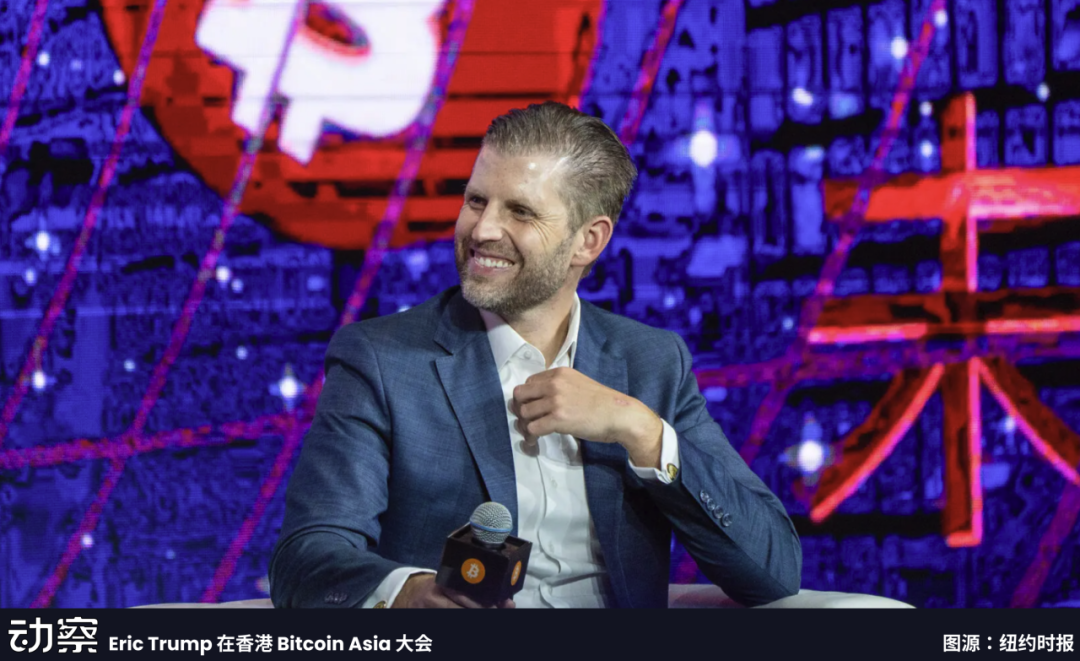
Eric Trump expressed a strong bullish attitude towards Bitcoin, confidently predicting that the price would reach $1 million, or even higher. He advised the audience to buy now and hold long-term, viewing volatility as a friend.
Behind WLFI lies a larger strategic chess game.
As an international financial center, Hong Kong has established a relatively complete regulatory framework for cryptocurrencies and a licensed trading system. A large amount of Asian capital enters the global market through Hong Kong, and the flow of these funds is sufficient to influence prices.
The Trump family has nearly half of its wealth tied up in cryptocurrencies, effectively entrusting their fate to a market that cannot be fully controlled. From the distribution of on-chain addresses, it is evident that Asian investors hold a high proportion of positions, particularly in Hong Kong and Singapore.
This shift in power is also reflected at the policy level. The Trump administration has shown rare caution in its attitude towards China: the promised 60% tariffs during the campaign have not materialized; regarding crypto regulation, the new SEC chair, Paul Atkins, has stated that he will maintain a more open stance towards projects from Asia; the U.S. Treasury has also lifted sanctions on several Chinese crypto companies, leaving room for cooperation.
From Sun Yuchen's $75 million investment to Binance's platform support; from Paxos' compliance and technology to DWF Labs' market services; from Ryan Fang's infrastructure layout to the gathering of Hong Kong capital, it is evident that a Chinese network spanning the Pacific is providing support for the American presidential family in the form of "digital guests."
The characteristics of this guest network are no different from those of two thousand years ago. Some provide funding, some provide labor, and some offer technology and channels. The difference is that today's stage is not in the court of Chu but in the on-chain market. The emergence of digital guests signifies that Chinese capital and technology occupy a significant position in the new power structure.
At the conference venue in Hong Kong, Eric Trump's remarks about China are particularly noteworthy. Eric Trump stated that the U.S. and China may understand digital currencies better than any other countries in the world. He called China a "powerful force" in the development of cryptocurrencies.
At this historic moment, we see new rules in the power game. When the son of the American president stands on a podium in Hong Kong, expressing respect to Asian investors and praising China's strength in the digital currency field, the boundaries of traditional geopolitics are being redefined.
Chinese capital and technology are no longer just peripheral sources of funding but have entered the core as "digital guests," playing a substantive role in this transnational game.
The applause from the audience is unending, and the wheels of history roll forward; we are witnessing the dawn of a new era.
免责声明:本文章仅代表作者个人观点,不代表本平台的立场和观点。本文章仅供信息分享,不构成对任何人的任何投资建议。用户与作者之间的任何争议,与本平台无关。如网页中刊载的文章或图片涉及侵权,请提供相关的权利证明和身份证明发送邮件到support@aicoin.com,本平台相关工作人员将会进行核查。




